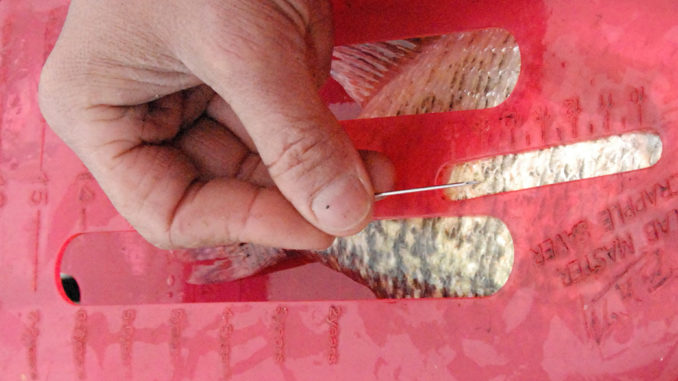
Hook removal, attention to wounds and “fizzing” an air bladder can save fish
In days gone by, nobody thought much about saving the life of a fish after it was caught; most were headed for the frying pan anyway. With today’s required live-release tournaments and catch-and-release practices, anglers have a vested interest in saving the life of their catch but may not know how.
Whether fishing saltwater or freshwater, two main factors account for fish mortality, especially during the winter when fish frequent deep water and relish live bait. Hooking mortality is No. 1. Some estimates say less than half of deep-hooked fish survive. No. 2 is swim bladder inflation. This occurs when the gases in the fish’s swim bladder expand when the fish is pulled rapidly from deep water with no time to adjust to the change in pressure. Overinflation causes the fish to float and suffocate after being released.
Hooks that become entangled in a fish’s gills are particularly hazardous. One trick is to bathe the bleeding area in soda pop. Unusual as it seems, the combination of carbonation and acidic content in the soda will cauterize the wound and keep the fish from bleeding out.
An inflated swim bladder can be released by “fizzing” the fish, deflating the swim bladder. First, locate the bladder, which is typically behind the pectoral fin and below the lateral line. Insert a hypodermic needle, available at veterinary or farm-supply stores, at an angle, moving from the tail toward the head. Insert with the grain of the fish’s scales over the bladder. Pressure release will be seen and felt through the needle.
Using a de-hooking device can remove a hook from a fish’s gullet without causing further damage to the gills or throat. Inexpensive commercial de-hookers are available at most tackle shops or can be made using an 8-inch piece of 3/32 aluminum wire, available at hobby stores. Flatten one end of the rod and cut a hook groove with a Dremel. Fashion a handle from a ¾-inch diameter dowel rod or deer antler.
Proper handling is also important in achieving live release. Always use wet hands to handle a fish. Avoid wrenching the fish’s lower jaw open while handling. Support a big fish by placing a hand under the belly and holding the fish horizontal. Finally, consider cutting the line or lure and leaving deep hooks in place rather than digging them out.




Be the first to comment